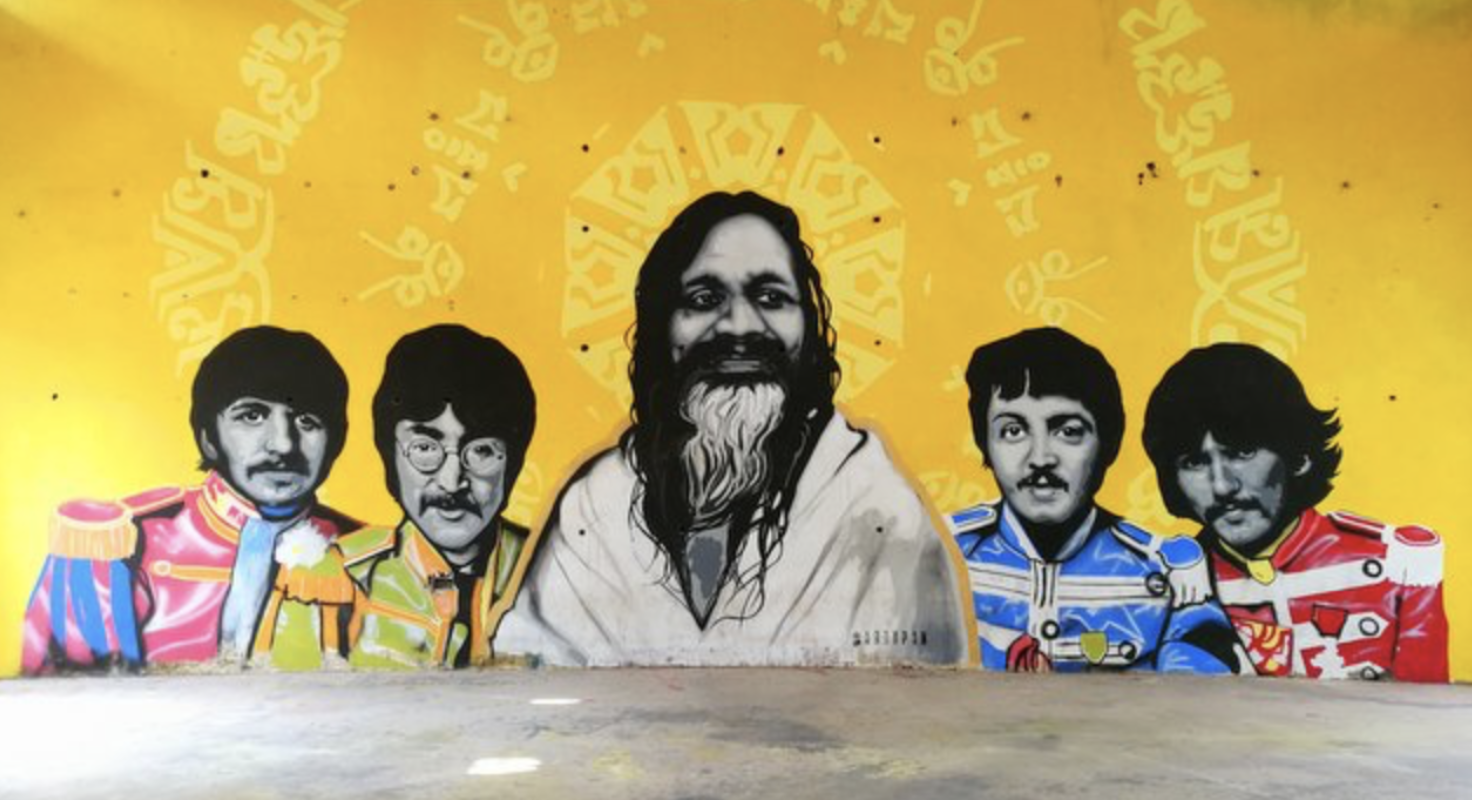A passage to India
It’s nearly midnight on the 31st. of December in Bali and almost by chance I bumped into Moon Safari on iTunes. I hadn’t listened to it in at least ten years. Before that, for another ten years it had been ever present in all my dealings with love, heartbreak, trips (and tripping), reveries and ramblings, until one day, just like that, I stopped. A whirlwind of emotions and memories inhabits this night, the New Year of the Gregorian calendar. I feel it contrasting my wishes to ignore it.
(Castellano aquí)
Let’s talk about traveling to places that no longer exist. We go running behind an uplifting song, a well written paragraph by a writer that we like, or pushed by the silly emotion provoked by a movie. Same as Bali is a theme park built for what western capitalism dreams the East to be, India is an ever worse case of mass psychosis. It doesn’t even need to keep the props around from that legendary 1968 when the Beatles travelled to Rishikesh to meditate with Maharishi Mahesh Yogi. Richard Alpert, who later returned to the United States as Ram Dass, was also stepping into India for the first time back then.
To avoid getting stuck in the sepia-color postcard of the Beatles’ Within you without you, the novel Karma Cola, by Gita Mehta, is an essential reading. Mehta tells how until 1968 any Indian young person’s dream was to migrate to England or the United States in order to avoid religious persecution, horrendous poverty and a brutal patriarchal system. They wanted to wear jeans, have extramarital sex and to live without concerns for the Indian caste system. Then the Beatles came and ruined everything: that damn 1968 India became the paradigm of cool. The Brits changed the jeans for muslin tunics and incense sticks. The U.S.A. people abandoned Coca-Cola for lassi and chapattis. Young Indians were left with nowhere to run, doomed to live in their own cool hell.
For some western people, India is a no-place built by a yearning for non-capitalist holidays. Those with more experience say that there are two happy days in India: the one you arrive and the one you leave. Thus the acronym I.N.D.I.A.: I’ll Never Do It Again. Many of us had a rough time in India, but we try to rescue the best moments because within certain circles speaking ill of India is like disrespecting your mother. When people ask me if I recommend travelling to India I say yes, of course, but you’d have to travel with the Beatles and Ram Dass to India in 1968, live as a beggar and listen to the Maharishi telling you about what you dreamt the previous night. Or even with André van Lysebeth to that day in 1964 when a westerner first set foot on Pattabhi Jois’s room before Yoga teachers went on tours like DJ’s.
Now that there is Coca-Cola, online shopping and low cost airlines, India is no longer the idealized nightmare it used to be: it’s something worse. Against Gandhi’s dream of a lay and more inclusive India, Narendra Modi’s government has severed rights for the Muslims and kept silent when Hindu radicals called for their murder. There are religious lynchings and Christians are persecuted. Even though the caste system has been outlawed, there are still “honor” killings related to inter-caste marriages and single pregnant people. Adults keep marrying children.
In spite of all that, if the opportunity presents itself, we go back to India. As South Americans, the Indians and us are on one side, the Europeans and U.S.A. people on the other. As South Americans, the great challenge is to travel with a critical point of view, to pierce the decoration of ashrams and shalas and not reproduce the self-knowledge trip of sixties' Europeans and U.S.A. people because it’s colonial and because it alienates us from getting to know our true identity.
The video that goes along with this text is from my third trip to India. It was 2012: I was quitting my job at the law firm around that time and I’d begun teaching yoga to a small group of friends. My pal Federico invited me to a lawyer’s meeting in New Delhi, with the bonus track of going to Goa for some yoga practice with a dear teacher. The first minutes of the video show an India that’s little known by conventional tourism. In the ashrams, bazaars or yoga rooms, westerners (even South Americans) are part of a privileged group in terms of purchasing power. However, in the meetings in Delhi with the kings of Indian capital, us westerners (especially South Americans) were the poor ones, an exercise in mortification and humility you couldn’t find at Maharishi’s place. Then follows a sunrise in Goa with loose instants of yoga practice.
I found this videos camouflaged under a “yoga” file and I decided to shape it into this small clip. It’s a mish-mash of moments captured with a cellphone and without any pretense of telling a straightforward story. It seems 10 years ago, when Instagram was only starting, we didn’t need a constant record of all our hours. These messages in bottles bring stories of a world which shaped us and doesn’t exist anymore. A whirlwind of emotions and memories visits us on this night, the New Year of the Gregorian calendar, and I wanted to celebrate and share it.

